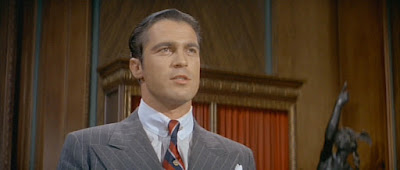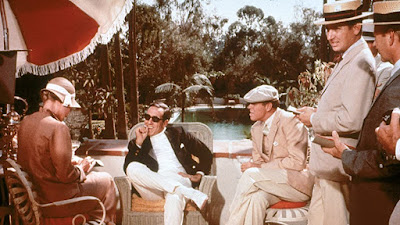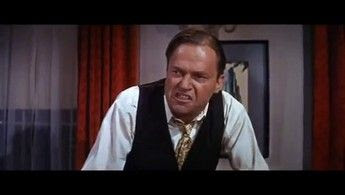The St. Valentine’s Day Massacre (1967) Starring
Jason Robards, George Segal, Ralph Meeker, Jean Hale, Clint Ritchie, Frank
Silvera, Joseph Campanella, Richard Bakalyan, David Canary, Bruce Dern.
Directed by Roger Corman. Screenplay by Howard Browne. Produced by Roger Corman. United States. Color. Run time: 100 minutes. Melodrama, Docudrama, Gangster.
The name Roger Corman is almost synonymous with low-budget cinema.
Called "The Pope of Pop Cinema", Corman is perhaps best known for a
series of low-budget films adapted from the tales of Edgar Allan Poe at AIP. He
also mentored such directors as Francis Ford Coppola, Ron Howard, Martin
Scorsese, Jonathan Demme, John Sayles, and James Cameron. Corman also had a
hand in launching the careers of actors like Peter Fonda, Jack Nicholson,
Dennis Hopper, Bruce Dern, Sylvester Stallone, Diane Ladd, and William Shatner.
While Corman spent most of his career as an independent
producer/director, he did for a time work with some of the Major studios in
Hollywood. One of those films was The St. Valentine’s Day Massacre, for then
major Twentieth Century Fox. Given a budget of $2.5 million, he managed to make
the film for $400,000 less. He apparently didn’t like the restrictions placed
on him by the studio but many consider the finished work to be one of his best.
The film takes a documentary approach to the story, utilizing a narrator (Paul Frees) to set the situations and to give backstory. Set in Chicago during prohibition, the film details the rise of the conflict between Al Capone’s (Jason Robard) Southside Mob and George "Bugs" Moran’s (Ralph Meeker) North Side Gang. The two rival gangs are fighting for control of Chicago’s bootlegging and gambling operations.
 |
| Peter Gusenberg (George Segal) forces the owner of a speakeasy to buy beer from Moran. |
Peter Gusenberg (George Segal), in a scene that looks to be out of The Public Enemy (1931), walks into a speakeasy and forces the owner to buy beer from Moran when his current supplier is Capone. This sort of infringement on his territory doesn’t sit well with Capone and he wants his enforcer, Frank Nitti (Harold J. Stone), to take Moran out but balks at the timeframe Nitti needs.
 |
| Jack "Machine Gun Jack" McGurn (Clint Ritchie). |
Instead, he hands over the task to Jack "Machine Gun Jack" McGurn (Clint Ritchie), who takes a more aggressive approach. He has already located where Moran lives and is anxious to do well for Capone.
 |
| A string of cars with assassins try to kill Capone. |
Meanwhile, Moran’s henchman, including Gusenberg and his brother Frank (David Canary), continue to do his bidding. We learn through a series of flashbacks that Moran has come to run the North Side Gang through the assassination of his predecessors, including Dean O'Banion (John Agar) in 1924 and Hymie Weiss (Reed Hadley) in 1926. Weiss’s murder occurred after a brazen assassination attempt on Capone, when a string of cars, each with a machine gun, drove by the Hawthorne restaurant outside of Chicago where Capone was eating and literally shot the place up, however, not killing their target.
 |
| But Capone (Jason Robards) survives and vows vengeance. |
In an attempt to leap over Capone, Moran teams with Joe Aiello (Alex D'Arcy) to assassinate Antonio Lombardo, the head of the Chicago branch of the Unione Siciliana benevolent society. Even though Capone warns Lombardo of the plot, the gangster dismisses the threat since he and Aiello are like brothers. However, with Aiello’s help, it is shown Peter Gusenberg guns him down in his own home.
This proves to be the last straw and the plans for revenge
are put into high gear.
 |
| Reinhardt Schwimmer (Mickey Deems) is an optician who lives with his widowed mother, Josephine (Celia Lovsky). |
We are introduced throughout the film to some other minor players, who will be involved, including Albert Wienshank (Joseph Campanella), a former speakeasy operator who wants out of the racket; Reinhardt Schwimmer (Mickey Deems), an optician who enjoyed being around gangsters so much that he quit his profession and lived off his widowed mother, Josephine (Celia Lovsky); and Johnny May (Bruce Dern), a mechanic and part-time driver for the Moran gang.
 |
| Capone’s men case the North Clark Street garage. |
With the help of two outside hitmen (Dick Miller and Jonathan Haze) brought in for the killing, John Scalise (Richard Bakalyan) and Albert Anselmi (Rico Cattani), two of Capone’s men team up for the hit. Capone’s men case the North Clark Street garage, which serves as Moran’s headquarters. The lookouts misidentify Wienshank, who enters the garage to announce he’s leaving the gang for Moran, and the plot gets underway.
The narration does not leave much to the imagination, as on February 14th, each victim’s day is introduced with the same phrase "On the last day of his life..." Additionally, the narrator gives you a running account of when those depicted would later die.
 |
| Out of town hitmen (Dick Miller and Jonathan Haze) are joined by John Scalise (Richard Bakalyan) and Albert Anselmi (Rico Cattani) to carry off the hit. |
The two out of town hitmen, disguised as Chicago police, enter the garage and order the gang members to stand against the wall. After they’ve confiscated all of their weapons, Scalise and Anselmi enter and, with machine guns, the four mow down the seven men, using shotguns to finish them off.
Moran, who has seen the fake police car in front of his
garage, has decided to get coffee with his two associates and is not killed.
However, Peter Gusenberg, Albert Wienshank, Johnny May, Albert Kachellek aka
James Clark (Kurt Kreuger), Moran’s brother-in-law and second in command, Adam
Heyer (Milton Frome), the accountant for the gang, and May, who was only fixing a
car at the time were. Only Frank Gusenberg survives and when questioned by the
police on his death bed, tells them no one shot him.
 |
| Capone vacations down in Miami, Florida and disavows his involvement to the press. |
Meanwhile, Capone vacations down in Miami, Florida and disavows any knowledge of the massacre to the press that has come to question him.
Fast forward and seven years later, McGurn, the master
planner of the Massacre, is himself gunned down in a crowded bowling alley.
 |
| George "Bugs" Moran (Ralph Meeker). |
Moran, we’re told, leaves Chicago and is relegated to small-time robberies. He died in Leavenworth Federal Prison in 1957 of lung cancer.
And eventually, Capone does go to prison for tax evasion and
dies due to the ravages of syphilis.
We’re also told, through narration, that no one is ever charged
for the murders. However, both Scalise and Anselmi were arrested for the crime.
At the pair's arraignment on March 8, 1929, their attorney Thomas Nash asked
the arresting officer, Sergeant Fred Valenta, if he had "just and
reasonable grounds" for believing Scalise and Anselmi committed the
massacre. Valenta replied, "No" and the two gunmen were released due
to lack of evidence. However, the two, along with Joseph "Hop Toad"
Giunta, the replacement of the replacement for Lombardo (that’s how quick the
turnover was), were found dead on May 8, 1929, on a lonely road near Hammond,
Indiana.
While the film tries to stay true to the real story of the
St. Valentine’s Day Massacre, the film is almost a little too documentary-like
for its own good. It sometimes comes off as a little stiff.
It doesn’t help that it seems to be miscast. Somehow Jason
Robards doesn’t come to mind when I think of Al Capone. Now some of that might
be due to the roles I’m more familiar with him playing later in his career. Nor
was he Corman’s first choice for the role. I’d read that Corman wanted Orson
Welles for the role. The studio said no
to Welles since he was unpredictable and didn’t take direction well. Not sure
he would have been a better choice in retrospect.
 |
| George Segal doesn’t feel right as machine gun-toting Peter Gusenberg. |
Also, George Segal doesn’t feel right as Peter Gusenberg. Segal just doesn’t seem to be the gangster type. White-collar criminal, okay, but not a machine gun-toting enforcer. He sort of looks like he’s acting more than the role comes naturally to him.
Corman's own frugality curbs some aspects of the production.
Sets seem to be underdressed, costumes are off-the-rack and ladies' hairstyles
are not right for the time. To avoid shooting delays, most of the lighting is
high-key and flat. Chicago's newly-minted film critic Roger Ebert thought the
movie less realistic than the old-time gangster films that had been filmed on
similar fake Hollywood street sets.
Ebert’s sentiment wasn’t his alone. Bosley Crowther, writing
for The New York Times, was pretty scathing. “It is not a good gangster picture
in any sense of the word. It isn't well constructed, well-directed, or well
played. It is sloppily overwritten and quite excessively performed so that it
artificializes and confuses the tawdry history it is supposed to relate.
He adds that “It adds nothing and serves no purpose in
repeating the oft-told tale of the Al Capone-Bugs Moran gang rivalry and its
gory termination in 1929. Neither does Jason Robards add any dimension to or
even give a fair approximation of the appearance and nature of Capone.” And as
far as George Segal as Peter Gusenberg and Ralph Meeker as Moran, he refers to them
as “downright jokes.”
Still, Corman was proud of the movie but did not continue as
a director-for-hire after its release. He didn't enjoy the studio's arbitrary
oversight or having his casting decisions second-guessed. His opinions against
working for a studio were further tainted by Fox's reports that the relatively
inexpensive, widely-screened film did not turn a profit.
Corman returned to directing independently but became
unhappy when American-International Pictures began editing his work behind his
back. He then vacated the director's chair altogether to concentrate on running
his own distribution company, New World.
I have to agree with the contemporary reviews; this is not a great gangster film. The best way to think of it is as a history lesson. It does appear to be somewhat accurate to the actual events or at least how they were understood at the time the film was made. Beyond that the acting, like the lighting, is flat. Like that fateful garage on February 14, 1929, it’s best to be avoided.


No comments:
Post a Comment